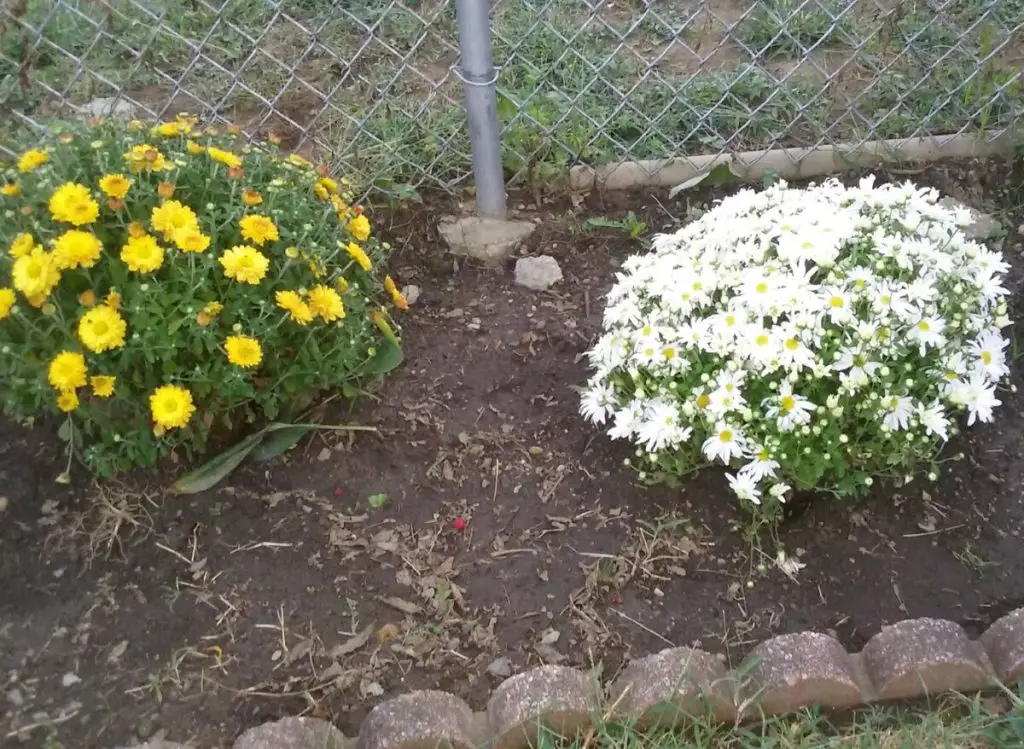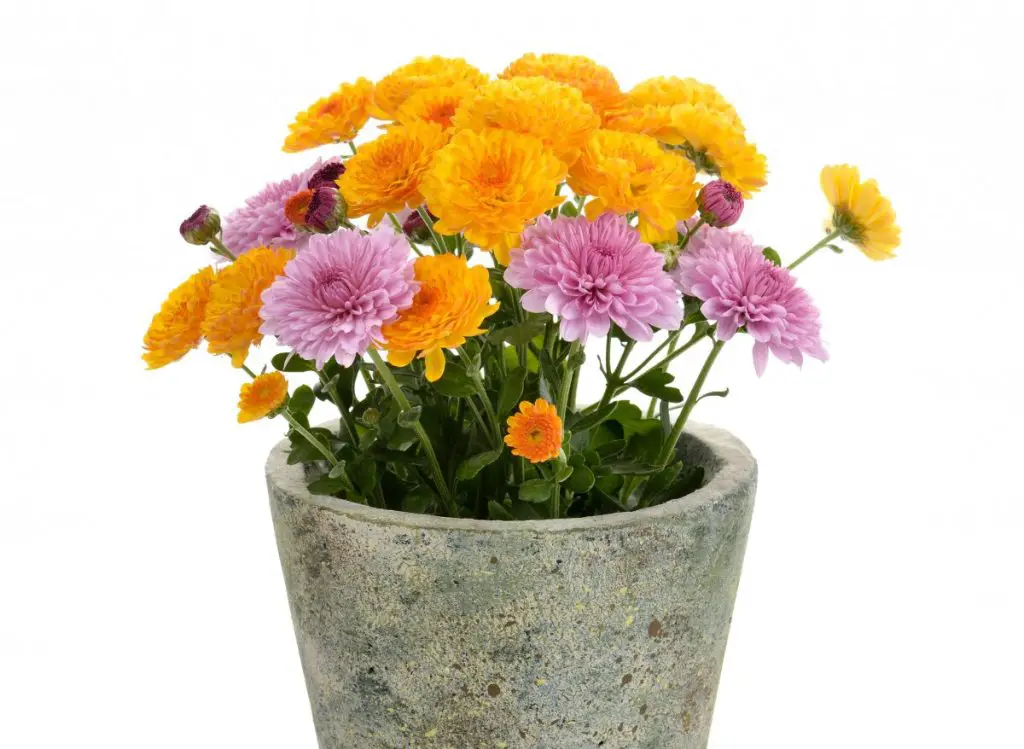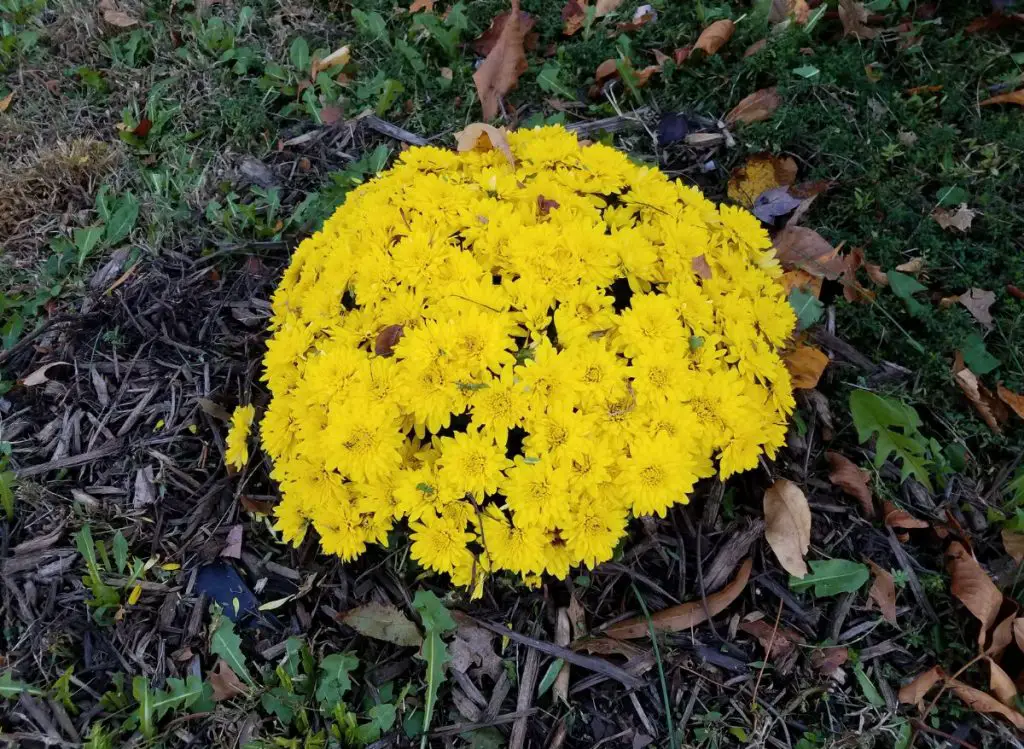Belgium mums are an appealing variety of Chrysanthemums that elevate the beauty of the gardens. This is a unique kind of Chrysanthemums that follows a different growth cycle than the rest of the varieties. It can flourish in hard winters. Some people ask are Belgian mums annual or perennial?
Named after their country of origin, Belgian mums are technically perennials. Generally, they are hardier and tougher than other garden mums. Choose Belgian mums varieties if you worry that your mums might not overwinter or get damaged by wind and rain.
Along with other characteristics, these flowery plants produce buds and flowers more than any other variety of their family.
Read on to find out everything you need to know about Belgian mums, how to care for them and make them thrive, and how to choose your Belgian mums.
See also: Will Frost Damage Your Mums? (Let’s find out!)

What are Belgian Mums?
Often called supermums, fall mums, or garden mums, Belgian mums got their name from their Belgian origin. In addition, Belgian mums are hardy plants superior to other chrysanthemums.
They generally flower even when other plants stop blooming and will provide a large number of buds (up to 1000 buds per Belgian mum and per season) even in challenging and harsh growing conditions, according to the Mississippi State University Extension Service.
You can grow Belgian mums both indoors and outdoors, and they need a lot of sunlight to thrive and reach their full potential. Ensure that your soil is well-draining, as soggy soil can cause the roots of Belgian mums to rot and develop fungal diseases.
Belgian Mums Characteristics
The table below shows a snapshot of Belgian mums characteristics:
| Common Name | Belgian mums |
| Genus name | Chrysanthemum spp. |
| Family | Asteraceae |
| Plant Type | Herbaceous |
| Life Cycle | Perennial |
| Soil Drainage | – Well-drained – Moist |
| Sun Exposure | Full sun (at least 6 hours of sun exposure) |
| pH requirements | 6.5 to 6.7 |
| Belgian mums expected size | – Height: 20 inches (50 cm) – Spread 20 inches (50 cm) |
| Maintenance requirements | Belgian mums require moderate care |
| Fertilizer Needs | Use fertilizer every other week (if necessary) |
| Flower color | – Red – Pink – Orange – Yellow – Green – Purple – Maroon – Bronze – White |
| Bloom time | Belgian mums flower from late summer to autumn |
| Minimum temperature | – 5 Celcius (23 Fahrenheit) |
| Pests and Diseases (*) | – Fungi – Mildew – Mold – Insects – Leaf spots – Spider mites – Leaf miner – Foliar nematodes – Thrips – Stunt virus – Aphids – Tarnished plant bug |
| Propagation | – Division or cuttings. |
| USDA Hardiness Zone | 5 to 9 |
| Toxicity | Mums plants, in general, can be toxic to cats, dogs, and horses. |
The good news is that Belgian mums thrive both indoors and outdoors. I recommend you choose one depending on your personal preferences and your location. Here is how to look after indoor and outdoor mums.
See also: Are Mums Indoor Or Outdoor Plants? (With Examples Types Of Mums!)
Looking After Indoor Belgian Mums
Proper soil mixture for planting the Belgian mums is necessary no matter whether you’re going to plant them indoors or outdoors.
See also: Will Too Much Water Kill Hibiscus? (Here’s the truth!)

Once you’ve planted the indoor mums in the new potting, here are some tips to look after them.
1- Proper Light
Belgian mums planted indoors will also need an adequate quantity of light. The best place is any spot in your home where they can get direct sunlight.
To grow effectively, Belgian mums require six hours of direct sunlight daily. If you plant Belgian mums indoors, choose a location near the south windows to ensure they receive adequate sunlight.
2- Proper Watering
Keeping the soil containing indoor mums moist will help them grow healthy. Ensure you don’t overwater them, instead, you can use a spray bottle to sprinkle water over them.
Also, you can put the pot in a bucket or container having three-inch high water.
3- Throw the Deadheads Off
Any ignorance or mistake in watering may result in minor deadheads or wilting of the plants.
However, if you timely take off these blackheads, it will encourage the growth of the plants. So, take them off to bloom the Belgian mums effectively.
4- Pick a Location That Gets at Least 6 to 8 Hours of Sunlight.
When your plants stop blooming or flowering for one season, you can put them outside for some time. This will prepare them for the next flowering season.
When planting Belgian mums outdoors, choose a location that gets a least six to eight hours of sunlight.
5- Fertilizer
Both indoor and outdoor, Belgian mums thrive with a slow-release fertilizer rich in phosphorus and nitrogen. It is an excellent idea to use 20-20-20 fertilizer during the first couple of weeks because it prevents the soil from drying.
Good fertilizer can help your plants grow stronger and healthier and develop healthy roots to sustain the sturdy base. Remember that it is crucial to fertilize Belgian mums at the right time.
Avoid fertilizing them before the spring season because it can make your Belgian mums less resilient, and they may struggle to survive the winter.
Instead, wait for springtime to feed your soil with a water-soluble fertilizer every month until July. It will help your plants grow stronger, healthier, and have more flowers.
Looking After Outdoor Belgian Mums
If you’re going to plant your Belgian mums outdoors, it’s also a good idea. Like other plants, fertile soil or planting medium is an essential thing for Belgian mums.
See also: Do Brassica Plants Really Flower?

Along with this, here is how to look after these plants.
1- Adequate Space
Keep in mind that your mums will expand up to a great extent. So, planting them at a distance from the other plants is necessary.
A good space for them is about 18 to 20 inches (45.72 to 50.8 cm). Additionally, keep your plants at least 18 inches (45.72 cm) away from other plants to allow sufficient room for root development.
2- Proper Watering
After the first few weeks, try to avoid overwatering your mums. Keep in mind when planning Belgian mums in pots, you need to ensure that the soil is evenly moist in the pot and not just at the top surface.
- If you are an experienced gardener, you will find the optimal amount of water by observing the soil according to outdoor weather conditions.
- If you are a beginner, I suggest sticking to one inch (2.54 cm) of water per week as it is the optimal amount that your plants can tolerate.
Water is necessary for indoors as well as outdoor Belgian mums. Make sure that you water them beneath the foliage level. After the first week, ensure that you water them about one inch each week.
3- Removing Deadheads
Similar to indoor Belgian mums, removing deadheads from the outdoor ones will help them grow effectively. This will allow the mums to expand widely.
4- Mulching
Belgian mums can’t bear too cold weather conditions; therefore, mulching them in extreme cold is essential.
You can do this by using straws, dry leaves, and wood chips. The height of mulch should be two or three inches (5.08 to 7.62 cm) more than the height of plants.
5- Frosting Care
If your plants are exposed to frost that results in dryness or wilting of the leaves, trimming them is a good idea.
This step will help them grow again effectively. After their pruning, mulch again.
6- Controlling The Weeds
Whether you’re planting your mums indoors or outdoors, proper care for the weeds is necessary.
Weeds are one of the big enemies of garden plants. So, take some preventive steps to eliminate the weeds from the mums.
See also: Best 13 Tips For Flower Gardening for Beginners.
How To Overwinter Belgian Mums
Making Belgian mum’s flower all year is not so difficult; the only requirement is to learn to carefully care for them. With a bit of help, you can make Belgian mums survive the winter.
Here are a few tips for overwintering Belgian mums:
- Keep your plants in a location less exposed to too much wind.
- Ensure you keep the soil well-drained. Generally, the cold will not kill your plants, but too much exposure to ice might kill their roots.
- During the fall season, keep them insulated. Typically, their leaves die and turn brown after hard frosts. To ensure proper growth next year, cut their foliage and leaves.
- You can use a thick layer of mulch after the soil freeze to keep the soil insulated and prevent the ground from thawing and freezing.
When Do Belgian Mums Bloom?
The most obvious blooming seasons of these mums are the early blooming season, mid, and late blooming season, which makes them perennials. In addition, there are more than 20 varieties of Belgian mums. All these bloom differently.
Typically, Belgian mums produce plenty of flower buds much larger than any other mum, according to Mississippi State University.
With their extra-long blooming season, the mums will enhance the beauty of your gardens. So, choose any of their varieties according to availability.
How Long Do Belgian Mums Last?
Generally, the flowers of the Belgian mums last for about three to four weeks, depending on the outdoor weather conditions and how far along the blooming cycle was when the plants were bought.
Is a Belgian Mum a Hardy Mum?
Belgian mums are hardy mums that produce the most abundant flowers out of all other varieties of their family.
Belgian Mums varieties
Here are different varieties of Belgian mums according to their flowering seasons.
Early Season Belgian Mums:
Generally, early blooming Belgian mums begin their blooming season around late July and continue to bloom for about eight weeks.
The table below shows the early season varieties of mums.
| Belgian Mum Early Varieties | Flowers color | Blooming Season |
| Camina | Red color | Early September |
| Fonti | – White – Coral – Pink – Orange – Yellow – And red. | Late August |
| Molfetta | Pink color | Early September |
| Temptress | Red color | Early to late August |
| Urano | – Yellow – Orange – Red | Late August to early September |
Mid Season Belgian Mums:
Typically, mid-season Belgian mums begin blooming around middle September to early October and continue blooming for about four to eight weeks.
The table below shows a snapshot of mid-season varieties of mums.
| Mid-Season Bloomers Types | Color | Blooming Season |
| Jasoda | – Purple – Orange – Red – White | Early October |
| Margo | White color | Around the middle of September |
| Milano | – Pink – Yellow – Orange – White | Middle to late September |
| Staviski | – Orange – Yellow – Pink – White – And red | Late September to early October |
| Veritas | – Orange – Yellow | Around the end of September to early October |
Late Season Belgian Mums:
Generally, late-season mums start blooming around middle October to late October and often last from six to eight weeks.
The table contains the late-season varieties of Belgian mums.
| Late fall mums varieties | Color | Blooming Season Time |
| Aramis | White color | Middle to late October |
| Dark Veria | Yellow color | Middle to late October |
| Mefisto Purple | Purple color | End of October |
| Mouria | Yellow color | Middle to late October |
| Vigorelli | – Red – Violet – Orange | Middle to late October |
How to Take Care of Belgian Mums?
- When purchasing Belgian mums, pick the one labeled “garden mums” instead of “florist” mums. Garden mums are hardier than florist mums, according to the University of Florida.
- Choose Belgian mums with more buds and fewer flowers when picking out your plant. It indicates that there is still plenty of growing time, and the Belgian mums plant is still young and fresh.
- Ensure you choose healthy, well-shaped plants with many flower buds because more buds mean more blooms in your garden.
- Growing Belgian mums in containers is a great way to brighten up your front door or patio.
- Start with deadheading as it encourages new blooms and keeps your plants beautiful and healthy. Pinch off the dead flowers, but you don’t need to prune the branches until spring.
- Put mulch about 4 inches (10.16 cm) all around your mum, including between the branches.
- Lightly Prune the Belgian mums’ stems in late spring through mid-August and wait for new growth, particularly if they grow more than 6 inches (15.24 cm) tall.
- Place the Belgian mums in pots using their roots after the first sign of frost.
- Keep them in a completely dark place and maintain their soil moist. In the spring, they gradually get acclimated to the light and replant them outdoors.
- Prune the branches and wait to see new growth.
- Ensure you plant your mum to get at least 6 hours of sunlight. Instead of maintaining their gorgeous compact shape, Belgian mums tend to grow long legs and get spindly without sufficient sun.
- Mums love to be hydrated but ensure there is sufficient drainage so the roots don’t rot. Mum can become wilted and dry out without enough watering, mainly if you plant your mums in containers!
- To provide maximum nutrients for your plant, fertilize every other week or use compost. Fall is the ideal time to start a compost pile. Check out this article for instructions on creating your compost pile.
See also: Can You Use Yarrow As Companion Plants For Your Garden? (Yes, here’s how!)
Final Thoughts
Belgian mums are a great hardy variety of chrysanthemums. Typically, Belgian mums are perennials. They are also hardier and more resistant than other garden mums.
Belgian mums are an excellent choice if you worry that your mums might get damaged by wind and rain or not overwinter.


